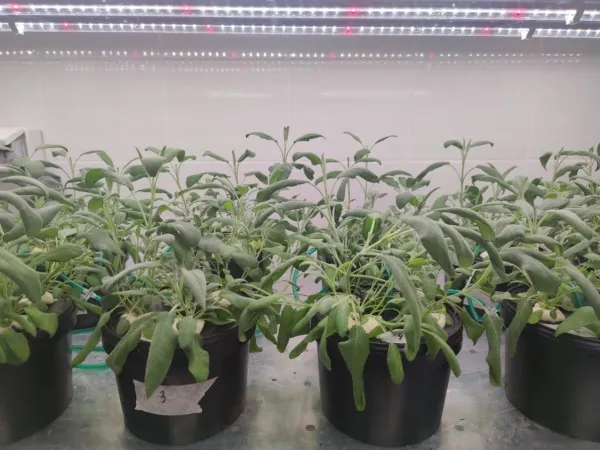
Breakthrough Discovery: How Selenium Supercharges Garden Sage for Medicine and Nutrition!
2024-11-05
Author: Wei Ling
In an exciting development for both agriculture and medicine, a collaborative group of scientists from Immanuel Kant Baltic Federal University and various esteemed institutions has unveiled that spraying garden sage with selenium can significantly enhance its growth and nutritional benefits. This revelation is especially important as garden sage is renowned for its medicinal properties, particularly in treating inflammation and gastrointestinal disorders.
The recent study, published in the respected journal Scientia Horticulturae, highlights that selenium not only enhances the antioxidative properties of garden sage but also boosts photosynthesis efficiency by a staggering 67%. This translates to an increased yield of essential nutrients, including sugar, amino acids, and proteins, making garden sage an even more valuable crop for both culinary and pharmaceutical uses.
With the agriculture sector facing high demands for increased productivity amidst changing environmental conditions, researchers are exploring innovative solutions to enhance plant growth and nutritional value. One such promising approach involves the use of biostimulators—substances that can alter the biochemical and physiological processes within plant cells. Selenium, both in organic and inorganic forms, has come under examination for its potential to improve plant resilience against challenges like soil salination and toxic heavy metals.
The research team employed a comprehensive approach, testing both organic forms of selenium (specifically amino acid selenium-methionine and selenium-cystine) and inorganic forms (selenate and selenite) on garden sage (Salvia officinalis L.), a popular herb used for its flavor and health benefits. Over a six-week period, the scientists carefully administered selenium-infused water solutions and analyzed the resulting growth metrics.
The results were compelling: organic selenium forms increased the biomass of garden sage by as much as 65%, along with a 25% boost in leaf count. In comparison, inorganic forms produced more modest improvements of 20.5% and 9%, respectively. Notably, the selenium content in the treated plants exceeded control levels by an eye-opening 30-fold.
Selenium's role in enhancing photosynthesis was further emphasized in the findings. The treatment resulted in a 45% increase in chlorophyll pigment essential for photosynthesis with organic selenium, compared to a 30% increase with inorganic forms. Additionally, selenium treatment led to considerable enhancements in the production of vital sugars and nutrients, with organic forms particularly excelling in boosting amino acids and proteins.
Moreover, the antioxidant activity of garden sage leaves significantly improved post-treatment, making the plant more resilient to harmful reactive oxygen species that can damage cellular structures.
“Our research demonstrates that incorporating selenium can vastly improve the medicinal and nutritional properties of garden sage," stated Dr. Liubov Skrypnik, the project leader. “The varied effects of organic and inorganic selenium underscore the importance of selecting the right form to optimize yield and quality.”
This groundbreaking discovery not only paves the way for enhanced agricultural practices but also holds promise for consumers seeking natural sources of selenium in their diets, potentially filling nutritional gaps and promoting overall health. Keep an eye on how this innovative research could reshape the future of herbal medicine and sustainable agriculture!




 Brasil (PT)
Brasil (PT)
 Canada (EN)
Canada (EN)
 Chile (ES)
Chile (ES)
 España (ES)
España (ES)
 France (FR)
France (FR)
 Hong Kong (EN)
Hong Kong (EN)
 Italia (IT)
Italia (IT)
 日本 (JA)
日本 (JA)
 Magyarország (HU)
Magyarország (HU)
 Norge (NO)
Norge (NO)
 Polska (PL)
Polska (PL)
 Schweiz (DE)
Schweiz (DE)
 Singapore (EN)
Singapore (EN)
 Sverige (SV)
Sverige (SV)
 Suomi (FI)
Suomi (FI)
 Türkiye (TR)
Türkiye (TR)